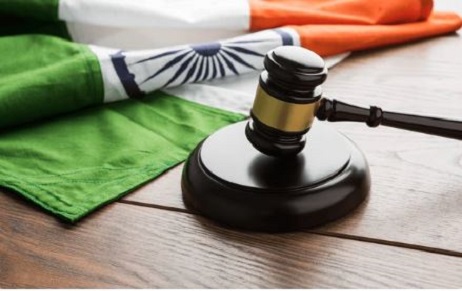Introduction Special Purpose Acquisition Companies (SPACs), also known as “blank-check companies”, are publicly listed traded…
Trade Mark Parody- An analysis of Tata Sons v. Greenpeace
Trade Mark Parody is a defense to Trade Mark infringement. There should be no likelihood of confusion between the original host work and the parody work, as the parody will not be taken in a serious manner. It must be cleverly portrayed so as to show itself as a humorous take on the original work.
In the case, Tata Sons v Greenpeace, Tata had initiated an action for infringement of their Tata logo. Further, they alleged defamation and disparagement against Greenpeace claiming total damages amounting to $2.17 million. Greenpeace released a game which was formed on the lines of the popular Pacman game wherein it depicted turtles being chased by the Tata logo. The game was based on the intent to raise awareness on the alleged adverse impact of the Dharma Port Project which was a joint venture project between Tata Sons and L & T, on Olive Ridley turtles. The port is being developed by the two companies on a build-own-operate-share-transfer basis. Greenpeace, along with other environmental groups have opposed the port’s construction since the port is in an ecologically sensitive area which is home to Olive Ridley turtles. Preventing this species of turtles from being endangered was the need of the hour, and hence, the concept of the game came up. The game allegedly also used the “TATA” logo mark with the stylized version of its “T within a circle” device, but also contains references to “Tata demons”.
Now, was this a parody or an infringement of Tata’s intellectual property?
Section 29(4) of the Trade Marks Act, 1999 refers to infringement of a registered trademark by use of the mark without the consent of the registered proprietor with undue cause and in the course of trade.
Essentially, it means that the use of a Trade Mark for criticism, fair use and parody is allowed if it is with due cause and not in the same course of trade.
Arguments on behalf of Tata:
- The attorneys on behalf of Tata argued that since their Trade Mark was unauthorized used, it amounted to infringement. Since the stylized version of its logo made it distinctive, the infringement could harm its repute and business.
- Further, Tata states that they received all the necessary clearances from government authorities. They also stated that the Dharma port has been designed to be an eco-friendly port and that all precautions have being taken to reduce any drastic impact on the endangered turtles. In their submissions, the following quote from an August 2010 report by the Central Empowered Committee was cited which was constituted by the Supreme Court to monitor compliance with its orders concerning forests and wildlife: “Details of the monitoring reports do not so far indicate any adverse impact of the Dharma Port Project on the wild life and its habitats including the Olive Ridley turtles.”
- Tata further submitted that they were the sole targets of this advertisement of Greenpeace, although it was a joint venture. They saw it as an attempt to intentionally ruin its business and damage its reputation by libel. The title of the game itself is ‘Turtle v. Tata’ which plainly pinpoints the company in a battle against turtles. Additionally, with each visitor, the Greenpeace website’s value and its capacity to attract donations increased, thanks to Tata’s Trade Mark.
Arguments on behalf of Greenpeace:
- Greenpeace argued that Tata’s suit for interim injunction was more of an alleged defamation suit than infringement of trademarks.
- Further, dilution or tarnishing a Trade Mark could occur only in course of trade, but Tata had not mentioned anything to substantiate on this ground.
- Greenpeace in reply stated that Tata was the main beneficiary of this venture, since L & T was pretty much solely the constructor of the port.
- Greenpeace contented that the juxtaposition of the word ‘Demons’ with the word ‘Tata’, and indeed with reference to the project itself, is merely hyperbole. They added that the word demons had been an “overtly emphatic expression” which was used to make a strong impression, and that as such it was not defamatory.
Greenpeace cited the case of Laugh it off Promotions v Freedom of Expression Institute. This judgment vacated an earlier injunction that had been granted to a South African brewer preventing an individual from selling T-shirts bearing parodied images of its brands.
The Delhi High Court followed precedent set in 1891 in Bonnard v Perryman. This case was an appeal against an interim injunction that had been granted to block the publication of an allegedly libelous newspaper article. The writer vehemently defended the accuracy of the article, and as a result, the court decided that granting an injunction before it had been determined whether the article was libelous was premature.
Using the “Bonnard rule”, as it came to be known, Justice Bhat said that Tata’s allegations of defamation can only be tested in a trial. Granting an injunction at this early stage would “freeze the entire public debate on the effect of the port project on the Olive Ridley turtles’ habitat” and “would most certainly be contrary to established principles.” He further stated that whether such information is published on the internet or in any other media does not affect the process of determining whether it is libelous. The medium used for publication would come into consideration only at the time of assessing the value of any damages.
Justice Ravindra Bhat in his judgment on January 28, 2011 dismissed Tata’s claim for an interim injunction. The Honorable Delhi High Court held that the use of the mark by Greenpeace was not in the course of trade, since it was not in the same line of business as Tata. Further, the usage of the Mark by Greenpeace was merely a promotional activity to draw consumer and public interest to its activity, hence it was merely denomination in nature. Thus, it amounted to fair use in Trade Mark law.
Tata has gone to appeal before a division bench of Delhi High Court, as of now. It was an interesting decision as parody in Indian Law has not been a widely known principle.
To successfully create a defense against alleged infringement, Trade Mark parody must be cleverly portrayed. The original host work must be famous and known to a particular target audience and the parody must prima facie remind of the original host work. The parody must not be an exact remake of the original host work, but it should conjure a new, original work. If the parody calls the original to mind, but doesn’t adequately distinguish it, the result is trademark infringement. No amount of wit or humor will save a parody which is likely to cause confusion.
First, a parody must be clever enough or witty enough so that customers will not assume the original trademark owner is connected with or approving of the parody. In cases where a likelihood of confusion is demonstrated, the defense of parody is defeated. Secondly, a parody must be clever enough to avoid dilution of “famous” marks.
Such a parody is allowed and is not an infringement of trademark. This interesting legal issue has not yet arisen in the Indian context with as much flavor as it has in the United States.
About the Author: Ms. Madhuri Iyer, Trade Mark Attorney at Khurana & Khurana and can be reached at: Madhuri@khuranaandkhurana.com
Follow us on Twitter: @KnKIPLaw .



